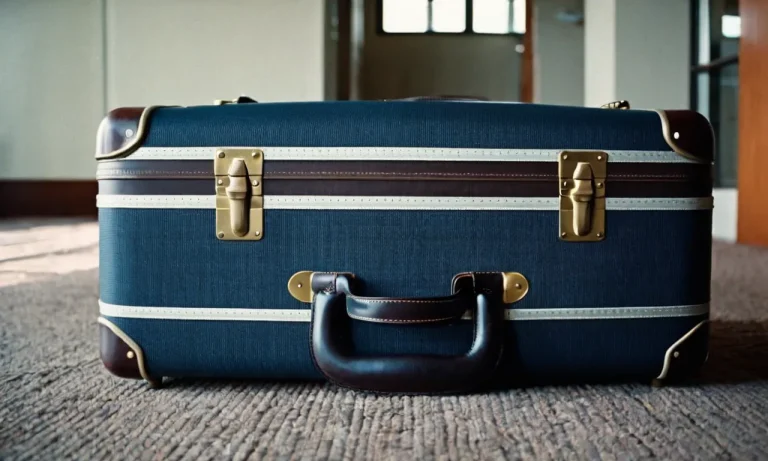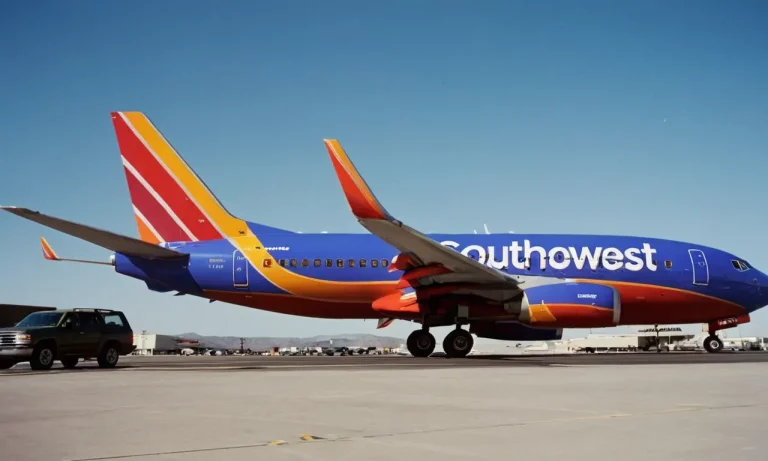Is Jamaica In The Bahamas Or The Caribbean?
Jamaica is a popular tourist destination known for its beautiful beaches, vibrant culture, and rich history. But a common question many have is where exactly is Jamaica located? Is it part of the Bahamas island chain or the Caribbean region?
If you’re short on time, here’s a quick answer: Jamaica is located in the Caribbean Sea, not in the Bahamas archipelago. It’s an independent island nation situated about 90 miles south of Cuba and 100 miles west of Haiti in the Greater Antilles islands of the Caribbean.
Now let’s explore this topic more in-depth.
In this comprehensive guide, we’ll cover key details about Jamaica’s geographic location, comparing it to the Bahamas and other Caribbean islands. We’ll also overview Jamaica’s history, culture, economy, tourism industry and relationship to other countries in the region.
Pinpointing Jamaica’s Geographic Coordinates
Latitude and Longitude
To understand the exact location of Jamaica, we need to look at its geographic coordinates. Jamaica is situated in the Caribbean Sea, specifically at a latitude of approximately 18.1096° North and a longitude of around 77.2975° West.
These coordinates place the island in the Northern Hemisphere and the Western Hemisphere.
Location Relative to Other Countries
Jamaica is part of the Caribbean region, which consists of numerous islands and countries. It is located south of Cuba and west of Hispaniola, which is home to the countries of Haiti and the Dominican Republic.
To the north of Jamaica is the Cayman Islands, and to the east is the island of Puerto Rico.
Although Jamaica and the Bahamas are both popular vacation destinations in the Caribbean, they are separate countries with distinct geographic locations. The Bahamas is actually located northeast of Cuba, while Jamaica is situated further west in the Caribbean Sea.
For more information about the geography of Jamaica, you can visit the official website of the Jamaica Information Service, which provides comprehensive information about the country’s land and geography.
Contrasting the Geography of Jamaica vs. the Bahamas
Island Sizes and Terrain
Jamaica and the Bahamas are both beautiful Caribbean destinations, but they are distinct in terms of geography. Jamaica is the third-largest island in the Caribbean, with a land area of approximately 4,240 square miles.
Its terrain is characterized by lush mountains, including the famous Blue Mountains, which offer breathtaking views and opportunities for hiking and exploration. The island also boasts stunning beaches, vibrant coral reefs, and dense tropical rainforests.
On the other hand, the Bahamas is an archipelago consisting of more than 700 islands and cays, with a total land area of about 5,358 square miles. These islands are scattered across a vast expanse of the Atlantic Ocean, and some of the most well-known ones include Nassau, Grand Bahama Island, and the Exumas.
The terrain of the Bahamas is generally flat and low-lying, with beautiful white sandy beaches and crystal-clear turquoise waters.
Fun Fact: Did you know that the Bahamas has the third-largest barrier reef in the world, known as the Andros Barrier Reef? It stretches for approximately 190 miles and is a haven for divers and snorkelers.
Climate Differences
The climate in Jamaica and the Bahamas is influenced by their location in the Caribbean, but there are some notable differences. Jamaica has a tropical climate, characterized by warm temperatures throughout the year.
The island experiences two main seasons: a wet season from May to November and a dry season from December to April. The average temperature in Jamaica ranges from 77°F (25°C) to 86°F (30°C), making it an ideal destination for beach lovers and outdoor enthusiasts.
Meanwhile, the Bahamas also has a tropical climate, but its weather is generally more moderate compared to Jamaica. The islands enjoy warm temperatures year-round, with average highs ranging from 75°F (24°C) in the winter to 89°F (32°C) in the summer.
The Bahamas experiences a similar wet and dry season pattern as Jamaica, but it is known for its pleasant trade winds, which provide a refreshing breeze and make the heat more bearable.
Comparison: Here’s a quick comparison of the geographical differences between Jamaica and the Bahamas:
| Jamaica | Bahamas | |
|---|---|---|
| Island Size | 4,240 square miles | 5,358 square miles |
| Terrain | Mountains, beaches, rainforests | Flat, low-lying islands with beaches |
| Climate | Tropical with wet and dry seasons | Tropical with moderate temperatures and trade winds |
So, while both Jamaica and the Bahamas offer stunning natural beauty and Caribbean charm, they have distinct characteristics that set them apart. Whether you’re looking for mountainous landscapes and vibrant rainforests or sandy beaches and turquoise waters, these destinations have something for everyone.
For more information on Jamaica’s geography, you can visit www.visitjamaica.com. To learn more about the Bahamas, you can explore www.bahamas.com.
Brief History of Jamaica
Pre-Colonial Era
Jamaica has a rich history dating back thousands of years. Before the arrival of European colonizers, the island was inhabited by the indigenous Taino people. They lived in small villages and relied on agriculture, fishing, and hunting for their sustenance.
The Taino society was organized into chiefdoms, with each chiefdom having its own leader.
The Taino people had a complex culture and were skilled in pottery, weaving, and carving. They also had a deep spiritual connection to nature, which is evident in their art and religious practices. Unfortunately, the arrival of Christopher Columbus in 1494 marked the beginning of a tragic period for the Taino people, as they were subjected to forced labor and diseases brought by the European settlers.
Under British Rule
In 1655, Jamaica was captured by the British from the Spanish, who had colonized the island. Under British rule, Jamaica became a major center for the transatlantic slave trade. Slavery was a brutal institution, and the enslaved Africans were subjected to inhumane conditions and treatment.
Despite this, the enslaved population resisted and fought for their freedom, leading to several uprisings and rebellions.
In the 19th century, Jamaica experienced significant social and political changes. The abolition of slavery in 1834 led to the emancipation of the enslaved population, although they faced ongoing challenges and discrimination.
The island also underwent economic transformations, with the emergence of a sugar-based economy and the introduction of indentured labor from India and China.
Independence to Today
Jamaica gained independence from Britain on August 6, 1962, becoming a sovereign nation within the Commonwealth. Since then, the country has faced various economic and social challenges, but has also made significant progress in areas such as education, healthcare, and sports.
Today, Jamaica is a popular tourist destination known for its vibrant culture, beautiful beaches, and reggae music. The island has produced world-renowned musicians like Bob Marley and Usain Bolt, who have helped to put Jamaica on the global map.
For more information on the history of Jamaica, you can visit the official website of the Jamaica Information Service: https://jis.gov.jm/.
Cultural Influences and Demographics
Ethnic Groups
Jamaica is a diverse country with a rich cultural heritage influenced by various ethnic groups. The majority of the population is of African descent, with African Jamaicans accounting for around 92% of the total population.
Other significant ethnic groups include Indo-Jamaicans, who are descendants of Indian indentured laborers brought to the island during the 19th and early 20th centuries, and Chinese Jamaicans, who arrived in the late 19th century.
Additionally, there are also small populations of Europeans, Middle Easterners, and other ethnic groups that contribute to the multicultural fabric of Jamaica.
Language
The official language of Jamaica is English, which is widely spoken throughout the country. However, Jamaican Patois, a dialect derived from English with strong West African influences, is also commonly spoken by the local population.
Patois is known for its unique pronunciation, vocabulary, and grammar, and is often used in informal settings and cultural expressions such as music and poetry. It is a source of pride for many Jamaicans and is recognized as an important part of the country’s cultural identity.
Religion
Jamaica is known for its religious diversity, with various faiths practiced throughout the country. The majority of Jamaicans identify as Christians, with the largest denominations being Protestant (including Baptist, Anglican, and Pentecostal) and Roman Catholic.
Additionally, there is a significant population of Rastafarians, who follow a spiritual movement that originated in Jamaica in the 1930s. Rastafarianism is based on the belief in the divinity of Emperor Haile Selassie I of Ethiopia and promotes principles such as equality, social justice, and the use of marijuana as a sacrament.
Cuisine
Jamaican cuisine is a delightful fusion of flavors influenced by various cultural groups. The country’s cuisine is known for its bold and spicy flavors, which are a result of the blending of African, Indian, European, and Middle Eastern culinary traditions.
Some popular Jamaican dishes include jerk chicken or pork, ackee and saltfish (the national dish), curry goat, and escovitch fish. These dishes often feature a combination of aromatic spices such as allspice, scotch bonnet peppers, and thyme, creating a unique and tantalizing culinary experience.
Tourism and Economy in Jamaica
Popular Tourist Attractions
Jamaica is a popular tourist destination known for its stunning beaches, vibrant culture, and natural beauty. One of the most famous attractions in Jamaica is Dunn’s River Falls, a majestic waterfall where visitors can climb up the cascading water.
Another must-see spot is the Blue Mountains, which offer breathtaking views and opportunities for hiking and coffee plantation tours. The pristine beaches of Negril, Montego Bay, and Ocho Rios are also major draws for tourists from around the world.
Jamaica’s rich cultural heritage is also a big attraction for tourists. The island has a strong music scene, with reggae being the most famous genre. Visitors can immerse themselves in the vibrant nightlife and enjoy live performances at venues like the Bob Marley Museum in Kingston.
Additionally, the island is home to historical sites such as Port Royal, once known as the “wickedest city on earth,” and the Rose Hall Great House, known for its haunted tales.
Economic Drivers
Tourism plays a significant role in Jamaica’s economy, contributing a substantial portion to the country’s GDP. The industry provides employment opportunities for thousands of Jamaicans and supports many local businesses.
According to the World Travel & Tourism Council, the direct contribution of travel and tourism to Jamaica’s GDP was 8.7% in 2019, and this is projected to rise to 11.4% by 2029.
In addition to tourism, agriculture is another important sector in Jamaica’s economy. The country is known for its production of sugar, coffee, and tropical fruits, which are exported to various parts of the world.
The agricultural industry provides employment for many rural communities and contributes to the country’s food security.
Furthermore, Jamaica has a growing manufacturing sector, particularly in the fields of food processing, textiles, and chemicals. The government has implemented policies to attract foreign investment and promote the development of industries that can create jobs and drive economic growth.
It is worth noting that while tourism and other sectors contribute to Jamaica’s economy, the country also faces challenges such as income inequality and high levels of poverty. Efforts are being made to address these issues and promote sustainable economic development.
Sources:
Conclusion
To wrap things up, Jamaica is definitively located in the Caribbean Sea as an independent island nation, not as part of the Bahamas chain further northwest. We explored exactly where Jamaica sits in proximity to other Caribbean islands and mainland countries.
We also overviewed key differences between Jamaica and Bahamian islands in size, terrain, climate and more.
While the Bahamas and Jamaica share similarities as popular tropical getaways, they have distinct histories, cultures, economies and geographic settings across the Caribbean region. Hopefully this guide has helped elucidate Jamaica’s location and relationship to its island neighbors.
Feel free to refer back next time you’re planning an island vacation or just looking to brush up on your Caribbean geography knowledge.








